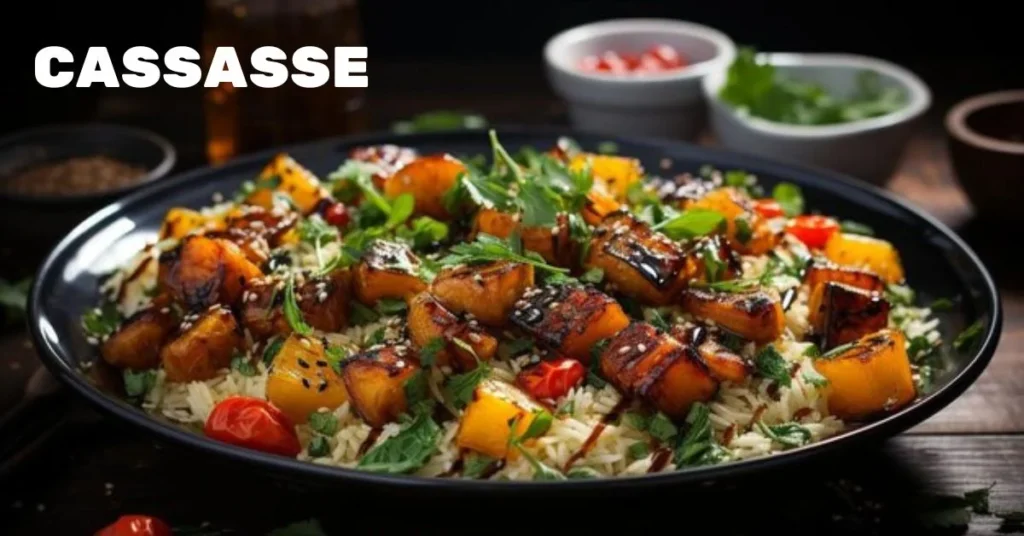Introduction to Cassasse
When you think of comfort food, what comes to mind? For many, it’s a warm dish that evokes memories and traditions. Enter cassasse—a culinary gem that bridges cultures and generations. This hearty meal is not just about flavor; it embodies stories passed down through time. As we explore the rich tapestry of cassasse, you’ll discover its roots, ingredients, and the warmth it brings to gatherings. Let’s dive into this delightful dish that unites people around the table!
History and Origins of Cassasse
Cassasse has roots that weave through the heart of various cultures, particularly in Mediterranean regions. Its origins can be traced back centuries, with influences from both Arab and Berber cuisines.
Historically, it emerged as a dish for communal gatherings. Families would prepare large portions to share during significant events or festivals. This practice fostered a sense of belonging and unity among those who partook in the meal.
Traditionally made with local ingredients, cassasse reflects the agricultural practices of its region. Each community adapted it according to available resources—becoming a symbol of local identity.
As people migrated and mingled, they brought their own twists to cassasse. Today’s versions showcase diverse flavors while respecting time-honored techniques passed down through generations.
Ingredients and Preparation of Cassasse
Cassasse is a dish that shines with simplicity and flavor. The core ingredients typically include cassava, which gives it that distinctive texture. This starchy root vegetable serves as the foundation.
To prepare cassasse, one must first peel and boil the cassava until tender. Once softened, it’s often mashed or blended into a smooth consistency. Some variations incorporate spices like garlic and onion to enhance the taste.
Adding protein is common. Many choose chicken, fish, or even sausage for added richness. These elements are mixed in harmoniously with the cassava base.
The final touch usually involves cooking everything together in a pot to allow flavors to meld beautifully. Each family might have its own secret ingredient or technique that makes their version of cassasse unique—an exciting aspect of this cherished dish!
The Cultural Significance of Cassasse
Cassasse is more than just a meal; it embodies the essence of community and tradition. Rooted in cultural practices, this dish often graces tables during festive gatherings and significant celebrations.
Sharing cassasse creates bonds among family members and friends. Each person contributes to the preparation or serves as a taste-tester, making it an interactive experience that strengthens relationships.
Its preparation varies across regions, reflecting local histories and customs. This diversity adds layers to its significance, showcasing how food can represent identity.
For many communities, cassasse serves as a reminder of heritage. It connects generations through shared recipes passed down like treasured heirlooms.
As people come together over this beloved dish, they celebrate not only flavors but also stories and traditions intertwined with their culinary history. Cassasse stands as a symbol of unity amid diversity in the world of gastronomy.
Regional Variations and Modern Adaptations of Cassasse
Cassasse has many regional variations that reflect local tastes and ingredients. In some areas, seafood takes center stage, with fresh fish or shellfish enhancing the dish’s flavor profile. Others might lean toward hearty meats like lamb or pork, creating a rustic twist.
Modern adaptations have also emerged, blending traditional recipes with contemporary influences. Chefs are experimenting with fusion flavors, incorporating spices from various cuisines to give cassasse a unique spin.
Vegan versions are gaining popularity too. Plant-based ingredients like lentils and seasonal vegetables replace meat while still honoring the essence of this beloved dish.
Whether it’s served in a cozy family setting or at trendy restaurants, cassasse continues to evolve without losing its roots. Each version tells a story of community and creativity through food.
A Shared Dish: How Cassasse Unites Communities
Cassasse is more than just a dish; it’s a social experience that brings people together. Families and friends gather around the table to share stories, laughter, and delicious food.
The preparation of cassasse often becomes a communal event. People from different backgrounds come together to chop vegetables, stir pots, and contribute their own twists on the recipe. This hands-on approach fosters connection and collaboration.
At festivals or community events, you’ll find large servings of cassasse’s being shared freely among neighbors. It encourages conversations about heritage and traditions while creating new memories that span generations.
Whether served at home or during public celebrations, cassasse’s transcends cultural boundaries. Each bite serves as a reminder of our shared human experience—appreciating flavors while embracing diversity in every spoonful. The warmth of this dish reflects the unity it inspires within communities everywhere.
Conclusion: Celebrating Diversity Through Food
Food has a remarkable way of bringing people together. Cassasse, with its rich history and diverse preparation methods, stands as a testament to this power. Each bite reflects the traditions and stories of those who have made it across generations.
As communities continue to evolve, so does cassasse’s. It adapts while still holding true to its roots. This dish is not just about sustenance; it’s about connection and cultural identity.
When we share cassasse at gatherings or family meals, we celebrate more than flavors—we honor our histories and embrace diversity. Through food like cassasse’s’s, we find common ground in our differences, making every meal an opportunity for unity and understanding.
FAQs
What is cassasse and why is it significant?
Cassasse’s is a traditional dish with deep cultural roots, blending local ingredients like cassava with communal preparation practices. It symbolizes unity, heritage, and shared history.
How did cassasse originate and evolve?
Cassasse’s originated in the Mediterranean, influenced by Arab and Berber cuisines. Over time, it adapted to various regional flavors and ingredients, becoming a symbol of local identity and tradition.
What are the basic ingredients and preparation steps for cassasse?
The core ingredient is cassava, which is boiled and mashed. Variations may include proteins like chicken or fish, with spices added for flavor. The mixture is cooked together to meld the flavors.
How does cassasse reflect regional diversity and modern trends?
Cassasse’s varies regionally with seafood, meats, or vegan options. Modern adaptations include fusion flavors and plant-based ingredients, showcasing its versatility while honoring traditional roots.
In what ways does cassasse unite communities?
Cassasse’s serves as a communal dish, often prepared and enjoyed together during gatherings and festivals. Its preparation fosters collaboration, and its sharing strengthens community bonds and celebrates cultural diversity.







